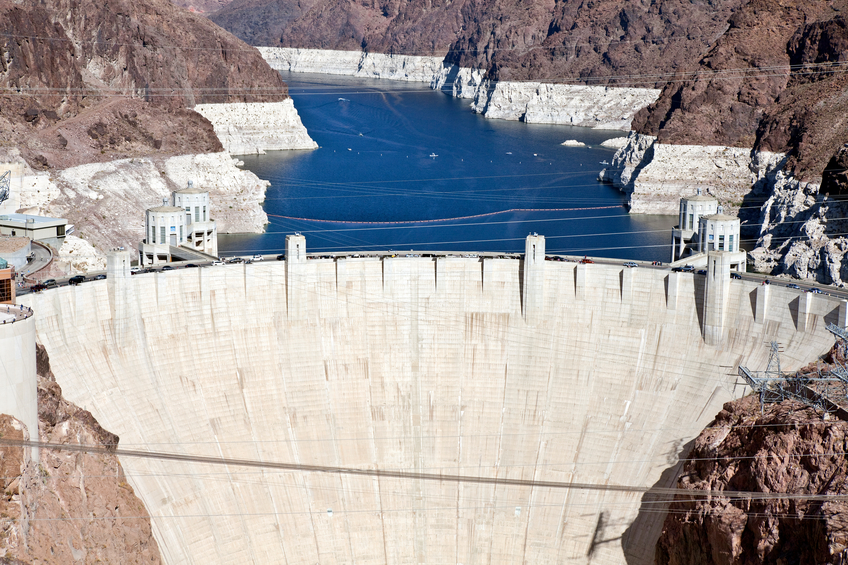Georgia Geotechnical 15 PDH Discount Package 2
Slope Stability (G04-001)
Emergency Action Planning for Dam Safety (C04-054)

This online engineering PDH course provides basic information on hydraulic performance of shallow foundations for the support of vertical-wall bridge abutments.
Scour at the base of bridge abutments during floods is a common cause of bridge failure in the United States. Shallow abutment foundations located at or near the channel banks are considered more vulnerable than other foundations because they are closer to the streambed and can significantly constrict flood flows. These types of abutments are frequently implemented for single-span bridges, and scour countermeasures are often integrated into the design to avoid placing the foundation below local scour depth.
Therefore, to protect small single-span bridge abutments built on shallow foundations from scour damage, methods for countermeasure design are needed that consider the abutment foundation and scour countermeasures as an integrated component of the bridge. The research study described in this course is designed to provide a complete picture of the flow field and local bed shear stresses on heterogeneous bed roughness in the bridge opening.
This 7 PDH online course is applicable to geotechnical engineers who are interested in improving their knowledge about scours occurring at the base of bridge abutment during floods.
This PE continuing education course is intended to provide you with the following specific knowledge and skills:
- Familiarizing with the performed literature research to determine depth and location of scour
- Understanding the proposed guidance on the hydraulic requirements for shallow abutment foundations
- Gaining a general overview of the development of a conceptual model for the increased shear in the middle of the contracted channel section
- Learning about the experimental equipment, program, and findings for several abutment riprap layouts
- Understanding the different design guidelines and requirements for riprap aprons for vertical-wall abutments with shallow foundations
In this professional engineering CEU course, you need to review the course document titled, "Hydraulic Performance of Shallow Foundations for the Support of Vertical-Wall Bridge Abutments”, which is based on the Department of Transportation document “Hydraulic Performance of Shallow Foundations for the Support of Vertical-Wall Bridge Abutments”, Publication No. FHWA-HRT-17-013.
Upon successful completion of the quiz, print your Certificate of Completion instantly. (Note: if you are paying by check or money order, you will be able to print it after we receive your payment.) For your convenience, we will also email it to you. Please note that you can log in to your account at any time to access and print your Certificate of Completion.

This online engineering PDH course provides guidance for analyzing the static stability of slopes of earth and rock-fill dams, slopes of other types of embankments, excavated slopes, and natural slopes in soil and soft rock.
Slope stability criteria are presented for strength tests, analysis conditions, and factors of safety. The criteria are intended to be used with methods of stability analysis that satisfy all conditions of equilibrium. Methods that do not satisfy all conditions of equilibrium may involve significant inaccuracies and should be used only under the restricted conditions described herein.
This 4 PDH online course is applicable to geotechnical and structural engineers, as well as design and construction personnel working on projects involving slope stability analysis.
This PE continuing education course is intended to provide you with the following specific knowledge and skills:
- Aspects applicable to all load conditions
- Analyses of stability during and at the end of construction
- Analyses of steady-state seepage conditions
- Analyses of sudden drawdown stability
- Analysis of stability during earthquakes
- Design criteria for existing and new embankments
- Design criteria of other slopes
- Presentation of various types of analysis and results
In this professional engineering CEU course, you need to review Chapters 1 through 4 of the US Corps of Engineers Publication EM 1110-2-1902, "Slope Stability".
Upon successful completion of the quiz, print your Certificate of Completion instantly. (Note: if you are paying by check or money order, you will be able to print it after we receive your payment.) For your convenience, we will also email it to you. Please note that you can log in to your account at any time to access and print your Certificate of Completion.

This engineering online PDH covers the basic guidelines and definitions regarding Emergency Action Plans (EAP) for dams.
To improve the Nation’s emergency preparedness and response capabilities, FEMA believes that formal guidelines are needed to help dam owners, in coordination with emergency management authorities, effectively develop and exercise Emergency Action Plans (EAPs) for dams. The purpose of the guidance in this course is to meet that need.
The EAP guidelines in this course are focused on developing or revising EAPs for dams that would likely cause loss of life or significant property damage as a result of a failure or other life-threatening incident. The areas downstream of each dam are unique. Therefore, the extent and degree of potential impacts of each dam vary.
This 4 PDH online course is applicable to geotechnical and civil engineers, as well as other technical personnel who are interested in gaining a better understanding in preparing and/or handling emergency action plans for dam safety.
This PE continuing education course is intended to provide you with the following specific knowledge and skills:
- Understanding the purpose, scope, coordination requirements, evacuation responsibilities, and maintenance of the EAP
- Familiarizing with the outline and contents of an EAP
- Understanding EAP responsibilities, notification flowcharts, response processes, and preparedness
- Learning about inundation maps
- Familiarizing with the notification flowchart, high flow notification table, and inundation map thru various examples
Upon successful completion of the quiz, print your Certificate of Completion instantly. (Note: if you are paying by check or money order, you will be able to print it after we receive your payment.) For your convenience, we will also email it to you. Please note that you can log in to your account at any time to access and print your Certificate of Completion.